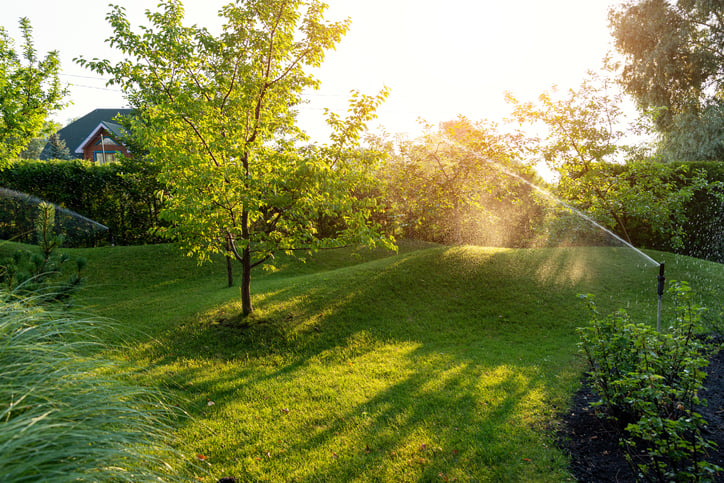There are many types of grasses in Michigan, but what you may not know is that there’s a good chance your lawn is composed of cool-season grasses. Cool-season grasses perform best in areas of the country that see wide temperature variations. That means your summers are hot and you experience cold winters – like the northeast.
And knowing little details about your lawn (like the optimal temperature it grows) can help you to take care of it. So, let’s take a look at cool-season grasses and the best approach you can take to keep your lawn thriving all summer long.
Which Grasses Are Cool-Season Grasses?
Even if you know that your lawn is made up of cool-season grasses, you can take it a step further to determine which one(s).
The most common types of cool-season grasses include:
- Kentucky Bluegrass
- Perennial Ryegrass
- Annual Ryegrass
- Fine Fescue
- Tall Fescue.
They generally grow best in the spring and fall when temperatures are between 60 and 75 degrees Fahrenheit. You’ll often find the seeds of these grasses mixed together to ensure growth in very sunny, shady, or high-traffic areas. But let’s look at some of the specific characteristics of each.
Kentucky Bluegrass
Kentucky bluegrass grows with a lovely deep green color, but it can brown out on hot summer days, but it’s considered to be a winter-hardy grass.
It’s also good at handling lots of foot traffic, but too much shade is not ideal for bluegrass. It performs best in sunny areas.
Perennial Ryegrass
Perennial ryegrass germinates quickly, grows with a bright green color, and then darkens over time. One of its distinguishing characteristics is the whitish cast you’ll see on the tips of the grass blades after you mow.
Perennial ryegrass performs well in high-traffic areas but has a low tolerance for drought or cold. But it grows well in a wide range of soils, including those that are wet.
Annual Ryegrass
Annual ryegrass is very similar to perennial ryegrass. It also germinates and establishes fast. It’s often used for quick color and erosion control. It’s Ideal for winter overseeding of warm-season lawns, resists disease, and tolerates foot traffic.
Fine Fescue
Fine fescue grasses do not need much fertilizer. It’s great if you’re looking for a low-maintenance lawn. When added to other grasses, fescues increase resistance to disease and pests.
Fescues don’t handle heat very well, they like colder temperatures a lot better. And never plant fine fescues in high traffic areas because they can’t handle it. Fescue is the best cool summer grass to use if your lawn is very shady.
Tall Fescue
Tall fescues give off a dark green color. Its deep root system helps it tolerate hot weather and droughts. It has a little rougher look than bluegrass and ryegrass because its blades are bigger and it looks like it “bunches”.
Tall fescues have a reasonably good tolerance to stress. Fescues are often found in playgrounds. Fescues are an excellent choice for sunny lawns, so too much shade will cause it to thin out.
Proper Lawn Care Plan
As you can see, knowing what type of grass you have helps you to plant it in the proper place, and get it the proper care it needs.
Lush Lawn’s 7-step fertilization and weed control program is the staple of the services that we offer. Our plan is specifically designed to give your Southeast Michigan lawn the nutrients it needs.
If you’re interested in learning more about our services, please contact your local Lush Lawn branch, including Grand Blanc and the surrounding areas, Rochester Hills, Brighton, and Saginaw.
If you do, then you’ll know, you’re giving your lawn the best care possible.
